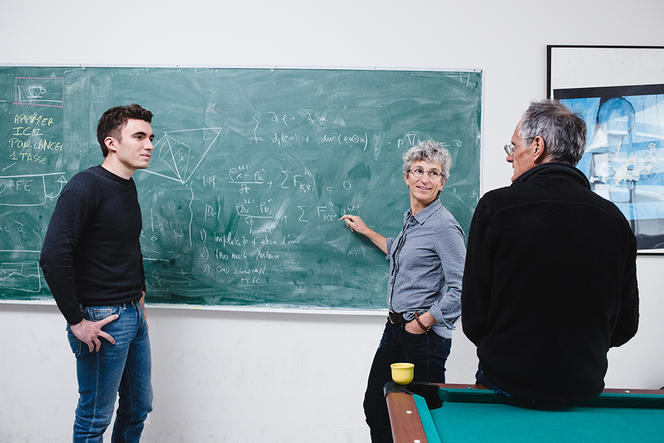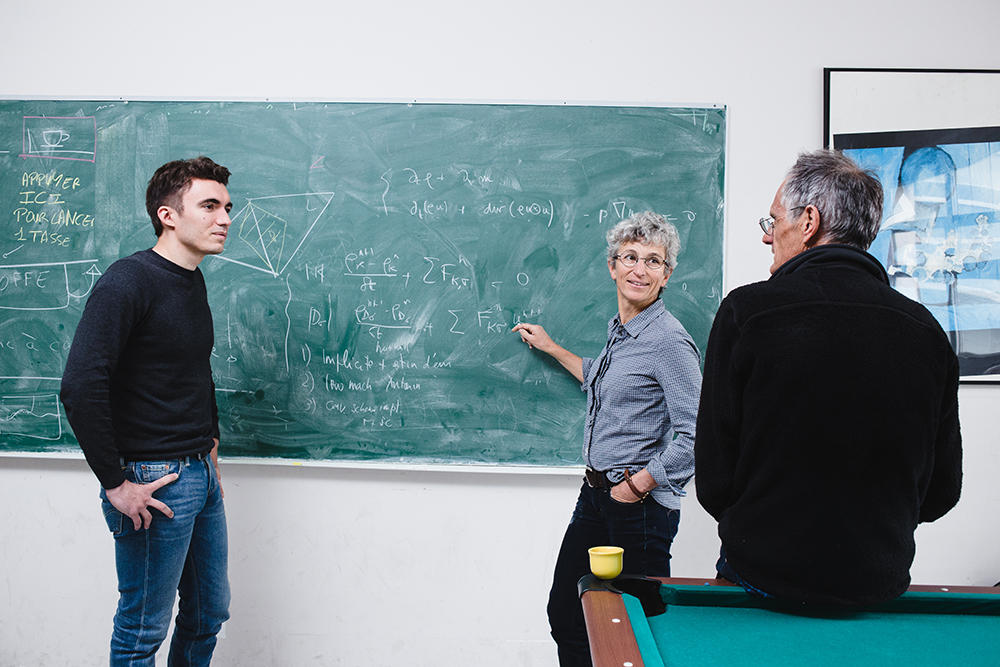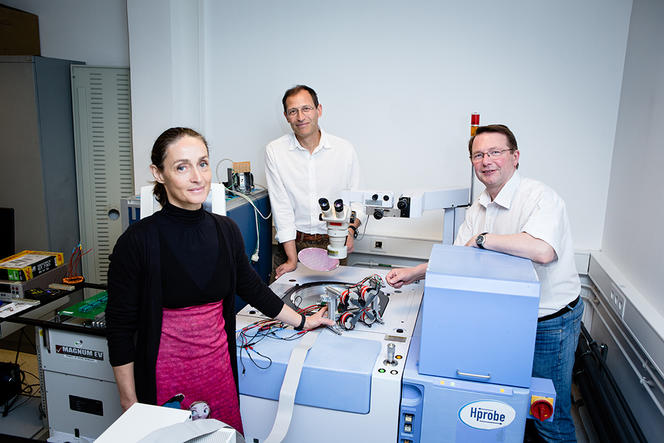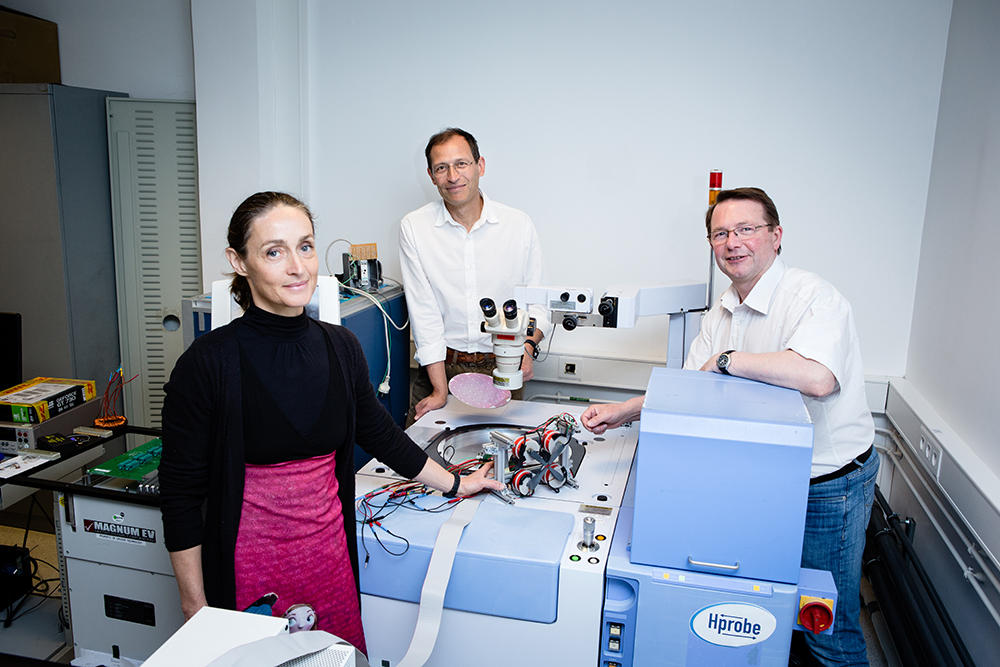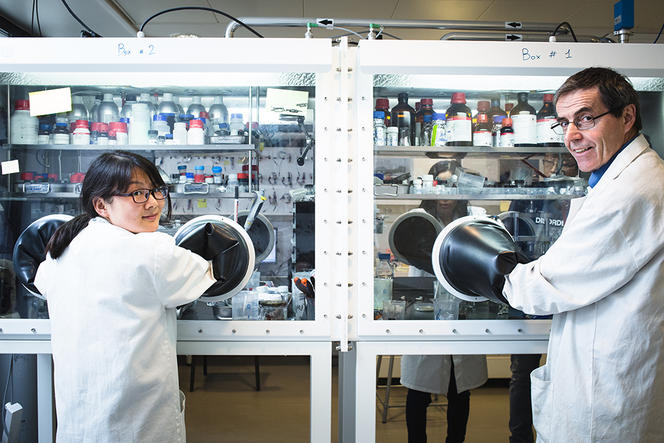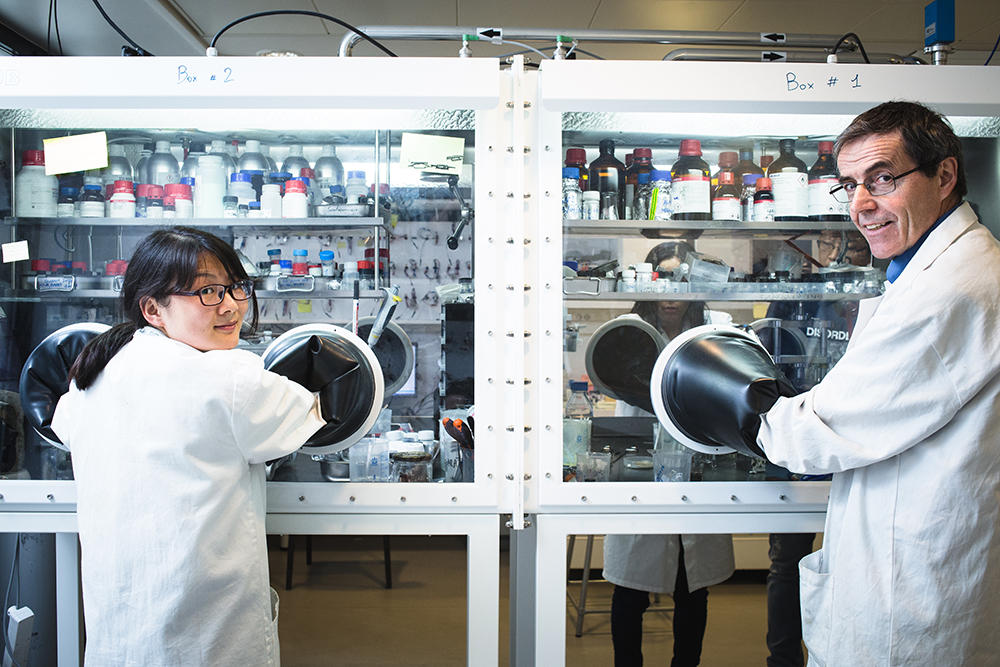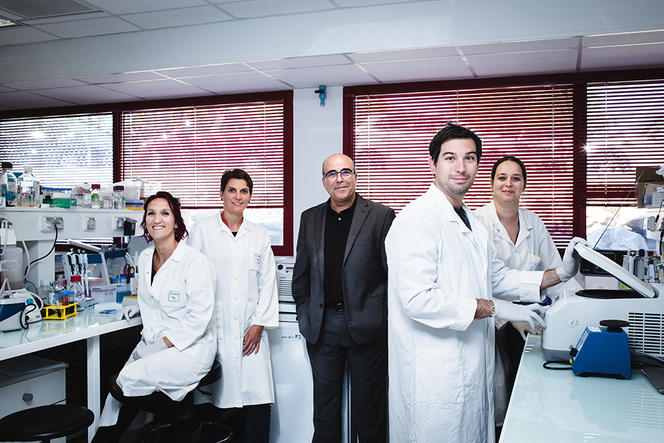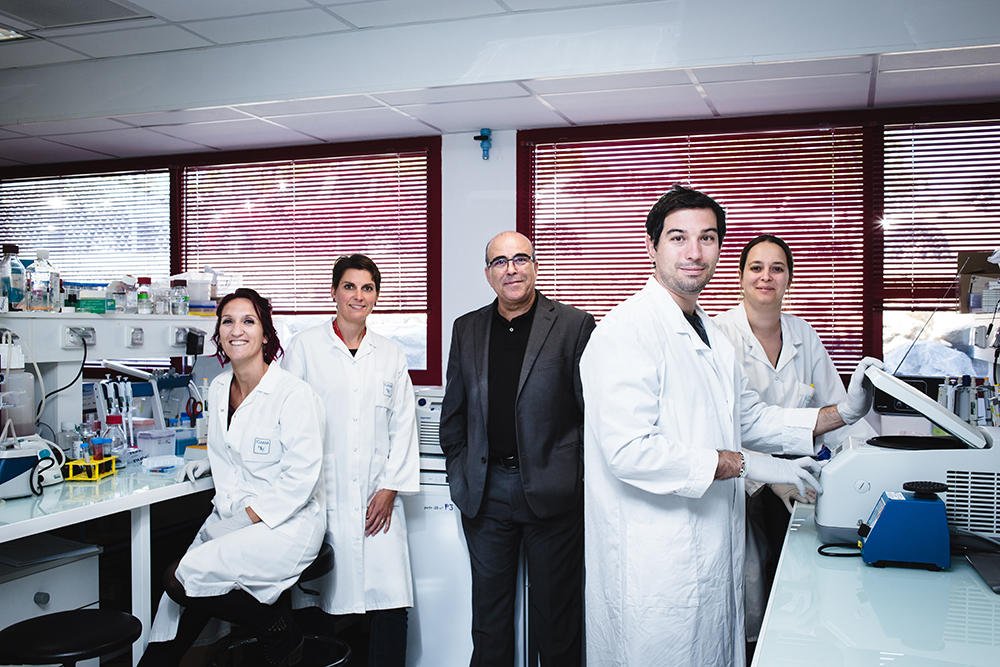You are here
Laureates of the CNRS Medal of Innovation 2017

Raphaèle Herbin
This 56-year-old mathematician, a specialist in the numerical analysis of partial differential equations, serves as director of the Institut de Mathématiques de Marseille1 (southeastern France). The research that she has conducted with her collaborators on the theoretical analysis of finite volume methods and the numerical simulation and modeling of compressible flows has led to the definition of a new class of algorithms for fluid mechanics. Among their many industrial applications, these algorithms contributed to the development of Calif3s, a software components library used by the French Institute for Radiological Protection and Nuclear Safety (IRSN).
Jean-Pierre Nozières
An expert in spintronics, this 54-year-old researcher is the co-founder, with Bernard Dieny (CEA), of the Spintec laboratory,2 which he directed for ten years. His research focuses on magnetic components, covering everything from materials to concepts. In the past decade, he has specialized in magnetic random access memory (MRAM). His commitment to finding practical applications for spintronics research, in which France is a world leader, has given rise to four startups: Crocus Technology (2006), eVaderis (2014), Antaïos (2016) and Hprobe (2017). Nozières is also the inventor of more than 20 patented innovations.
Jean-Marie Tarascon
This specialist in the electrochemistry of solids is a professor at the Collège de France and the director of the Solid State Chemistry-Energy laboratory3 Now aged 63, he was first recognized for his research on high-temperature superconductors, before turning his focus to electrochemical energy storage and becoming one of the pioneers of lithium-ion batteries. His work aims to develop new energy storage technologies, with a view to managing the planet’s energy resources more efficiently. Tarascon has achieved numerous breakthroughs in the synthesis of new electrode and electrolyte materials for batteries, the study of lithium reaction mechanisms and the development of new battery configurations. In 2011 he oversaw the creation of RS2E, a research network on electrochemical energy storage uniting 17 academic laboratories and three industrial technology research centers, as well as a number of industrial partners. The originator of the first sodium-ion batteries, he is also the inventor of more than 85 patented innovations, a quarter of which have been licensed.
Jamal Tazi
This 57-year-old professor and specialist in functional genomics heads a research team at the Institute of Molecular Genetics of Montpellier (IGMM).4 He is responsible for major advances in the alternative splicing of precursor mRNA, a process that can be used to obtain several different proteins from the same gene. His work in this field paves the way for new treatments to fight viral and genetic diseases. In 2008, Tazi founded the biotech company Splicos, which became Abivax in 2013, to develop antiviral drug candidates. He is the director of Abivax Therapeutics (formerly Splicos Therapeutics), a joint laboratory set up by his company and the CNRS in 2009. Protected by nine patent families, his innovations include ABX464, a molecule that targets the AIDS virus, currently in phase II clinical trials.
Author
Véronique Meder is a communications officer at the Direction of Communication of the CNRS.


